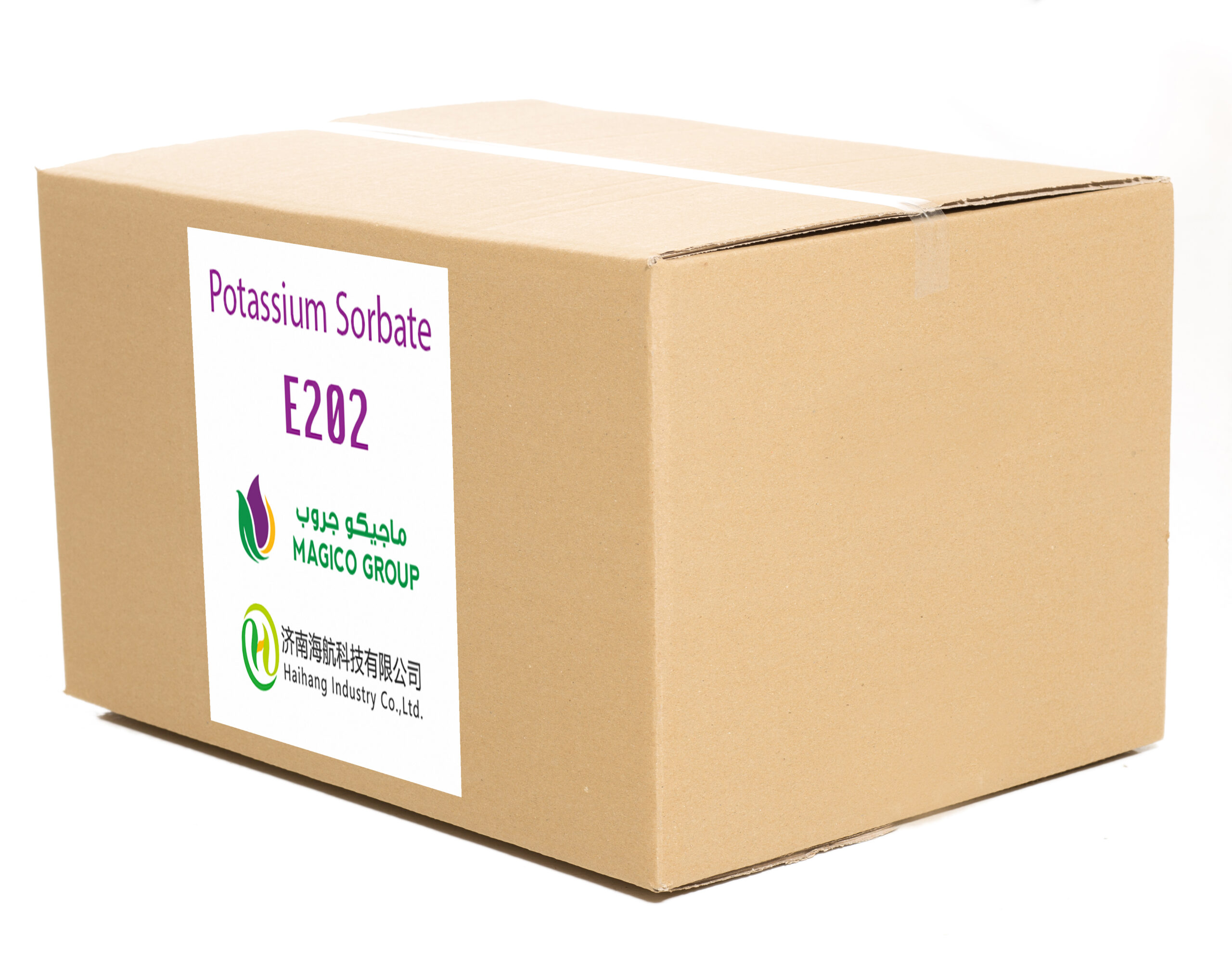Description
Potassium Sorbate (E202)
Compound Properties:
Potassium sorbate is the potassium salt of sorbic acid, chemical formula CH3CH=CH−CH=CH−CO2K. It is a white salt that is very soluble in water (58.2% at 20 °C).
Other Names for this Substance:
- 2,4-Hexadienoic acid, potassium salt (1:1), (2E,4E)-
- Sorbic acid, potassium salt
- 2,4-Hexadienoic acid, potassium salt, (E,E)-
- 2,4-Hexadienoic acid, potassium salt, (2E,4E)-
- Potassium sorbate
- E 202
- Potassium (E,E)-hexa-2,4-dienoate
- E 202 (preservative)
- K 60/95
- PO 300
Uses:
Potassium Sorbate is used to prevent molds and yeasts in many foods, such as cheese, yogurt, dried meats, apple juice, dried fruits, soft drinks, fruit drinks, and baked goods. In addition, herbal supplement products generally contain potassium sorbate, which works to prevent mold and microbes and increase shelf life.
It is used in many personal care products to prevent the development of microorganisms that cause spoilage. It can be used as an alternative to parabens.
Toxicology:
– In pure form, potassium sorbate is a skin, eye and respiratory irritant. Concentrations up to 0.5% are not skin irritant.
-Three studies conducted in the 1970s did not find that it had any carcinogenic effects in mice.
Usage rates:
As a food additive, potassium sorbate is used as a preservative in concentrations ranging from 0.025% to 0.1%, which in 100 grams gives an amount of 25 mg to 100 mg. No more than 0.1% is allowed in fruit butters, jelly, preserves, and related products.
0.3% is allowed in “cold cheese foods.” The upper pH limit for effectiveness is 6.5.
The maximum permissible daily intake is 25 mg/kg or 1750 mg per day for an average adult (70 kg). Under some conditions, particularly at high concentrations or when combined with nitrite.


